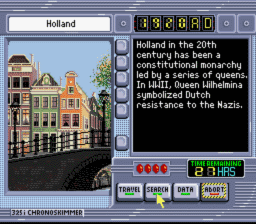Moving Games Forward

Here is an interesting whitepaper called Moving Learning Games Forward: Obstacles, Opportunities and Openness written by Eric Klopfer, Scot Osterweil, and Katie Salen with contributions by Jason Haas, Jennifer Groff and Dan Roy and right out of the Education Arcade.
You really need to read the entire paper but here is one highlight which is near and dear to my heart–Barriers to widespread use of games in education. Here is the list from the report.
Barriers to adoption:
- Curriculum Requirements: Historically, schools have been reluctant to give up textbooks or purchase educational technologies that are either not clearly linked to state standards, or that have not proven their efficacy. As a result, K-12 curriculum standards “lock down” the curriculum leaving no space for adoption.
- Attitudes: Some parents and educators have negative attitudes about video games, which are reinforced by a limited dialogue in the media around the relative merits of video games broadly. These attitudes take on a different flavor in the “chocolate broccoli” problem: Kids, particularly pre-teens, tweens, and teens shy awayfrom games they are told are good for them, or labeled as educational.
- Logistics: Educators often find it difficult to integrate the play of game into the time structure of school day, which is often ruled by 45-minute classes. In some schools, access to computers is too limited for games to play a mainstream role in learning. For mobile games, the ban on mobile phones and other portable devices in schools is a large barrier to entry.
- Support for Teachers: Most teachers have little experience in integrating games into the classroom, and professional development programs most often do not include support in this area. Teachers lack the time,incentives, and support for this work.
- Assessment: While games may be especially good at teaching higher order skills, these skills are not typically assessed in standardized exams. New frameworks for assessment of these skills must be developed if games are to be leveraged within the performance-driven culture of most schools.
- Evidence: While this is changing, not enough studies have been done to date showing that learning games are effective. Without this evidence, the attitudes and barriers discussed above will be slow to change.
- Uses of Games: Examples of how games can be integrated into a range of curricular experiences is crucial; a limited set of these models exist currently. (this too is changing)
- Limited View: People often have a limited view of the variety of games available, which narrows expectations around the viability of games to engage students.
- Social and Cultural structures: Existing social and cultural structures around education, school, learning, and play make the uptake of educational games challenging. These structures are incredibly difficult and slow to change, and pose perhaps the greatest challenge to the educational games space.
Posted in: Education, Gamers, Games video games
Leave a Comment (1) ↓